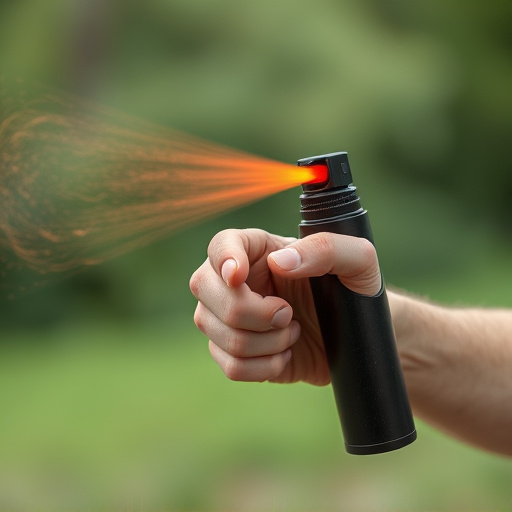This guide provides a comprehensive, step-by-step approach to removing pepper spray from the skin, emphasizing rapid action and proper techniques. It starts with immediate flushing under a running faucet or garden hose, followed by a gentle soap and warm water solution (avoiding harsh soaps or alcohol). Drying the area gently with a soft towel is crucial. The text also highlights legal considerations surrounding pepper spray ownership and usage, along with safe application techniques to minimize risks. Key points for prevention include awareness of surroundings and understanding local regulations.
“Uncover the power of pepper spray as a deterrent and explore its impact on personal defense. This comprehensive guide delves into the science behind this non-lethal weapon, revealing its composition and immediate effects. We demystify the removal process, offering effective techniques to alleviate skin irritation caused by exposure.
Furthermore, legal considerations and safety precautions are essential topics covered, providing a well-rounded perspective on pepper spray deterrents and empowering individuals with knowledge for self-defense.”
- Understanding Pepper Spray: Composition and Effects
- The Science Behind Pepper Spray Removal
- Effective Techniques to Remove Pepper Spray from Skin
- Legal Considerations and Safety Precautions
Understanding Pepper Spray: Composition and Effects
Pepper spray, a potent chemical agent, is designed to disable and deter potential threats by temporarily impairing an individual’s vision and respiratory system. Its primary active ingredient is capsaicin, the same compound that gives spicy foods their heat. This irritant affects nerve endings, causing a burning sensation and extreme discomfort. The composition of pepper spray includes various concentrations of capsaicin suspended in a liquid solution, often paired with other ingredients to enhance its effectiveness and duration.
When pepper spray comes into contact with skin or eyes, it can cause immediate yet temporary symptoms such as itching, redness, swelling, and tears. Removing pepper spray from the skin is crucial for alleviating discomfort and potential irritation. The process involves thoroughly washing the affected area with soap and warm water to dilute and rinse away the chemical. It’s important to note that prompt action is essential, as waiting can lead to more severe reactions. In cases of eye exposure, seeking medical attention is advised due to the risk of corneal damage.
The Science Behind Pepper Spray Removal
Effective Techniques to Remove Pepper Spray from Skin
Removing pepper spray from skin is crucial for immediate relief and to prevent long-term irritation. The first step is to flush the affected area with plenty of water. Hold your face under a running faucet or use a garden hose for several minutes, ensuring that you thoroughly rinse all pepper spray residue. This simple action helps dilute the capsaicin oil responsible for the burning sensation.
After initial flushing, apply a mild soap and warm water solution to gently clean the skin. Avoid using harsh soaps or alcohol-based products, as they can exacerbate the irritation. Consider using a facial cleanser designed for sensitive skin, which will help remove any remaining pepper spray while minimizing discomfort. Once cleaned, pat the area dry with a soft towel, ensuring no moisture remains on the skin.
Legal Considerations and Safety Precautions
When considering pepper spray as a deterrent, it’s crucial to understand the legal implications and safety precautions involved. The use of pepper spray is regulated by local laws, and its application must adhere to specific guidelines to ensure fairness and protect individuals’ rights. In many jurisdictions, civilians are permitted to carry pepper spray for self-defense, but there are strict rules on when and how it can be deployed.
Safety precautions are paramount when using pepper spray. It’s essential to learn the proper technique for application to maximize effectiveness while minimizing the risk of accidental exposure or overuse. Pepper spray removal from skin should be done with care to avoid irritation or prolonged discomfort. Users should also be aware of their surroundings, ensuring they do not point the spray at bystanders or sensitive areas, such as eyes and open wounds.
Pepper spray, while a powerful deterrent, can be removed from the skin with the right techniques. Understanding the composition of pepper spray and its effects is crucial, as is knowing how to navigate legal considerations for self-defense. By employing effective removal methods, individuals can mitigate discomfort and ensure safety post-exposure. Remember that prompt action and proper care are key when dealing with pepper spray removal from the skin.
